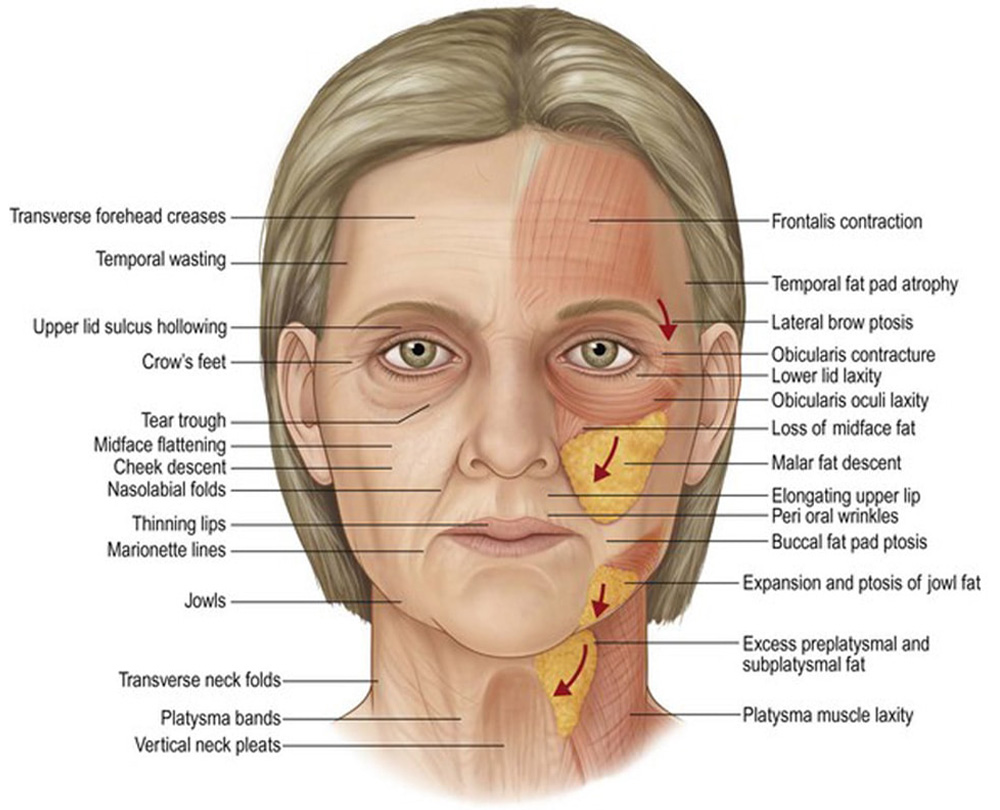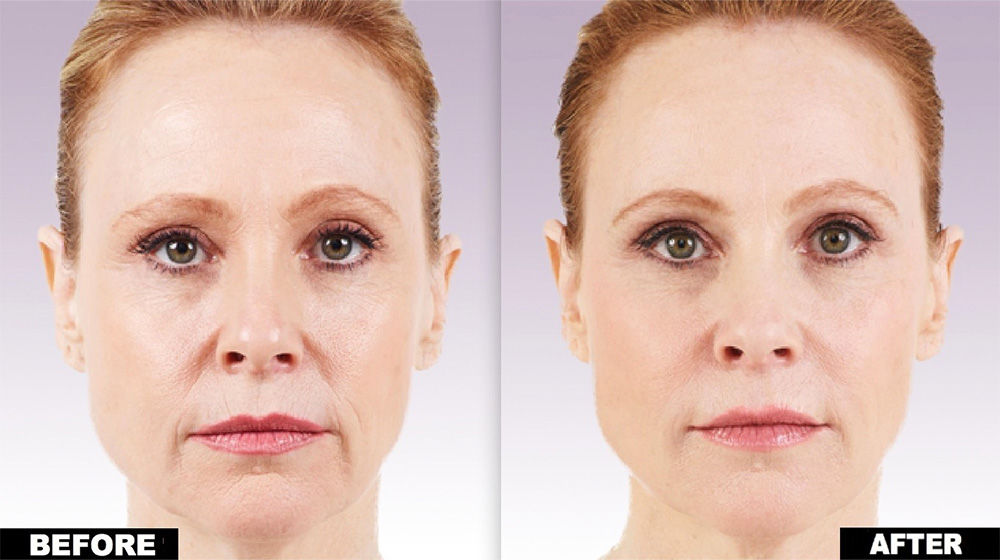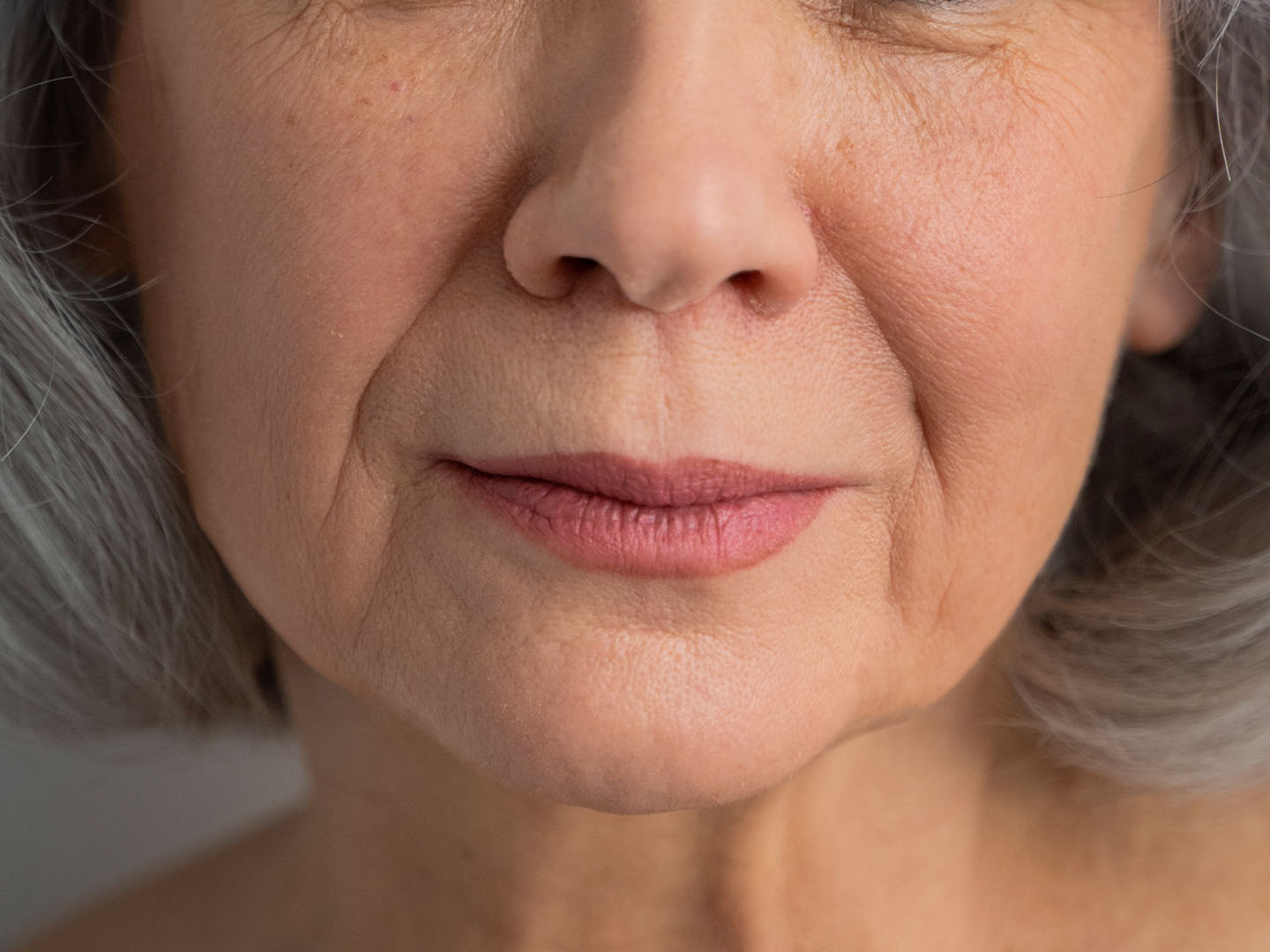
Marionette lines are among the most emotionally expressive signs of facial aging. Moreover, they represent a unique clinical challenge for restoring volume and lift without distorting facial harmony.
Juvéderm for marionette lines provides a refined, patient-tailored approach to treating these creases. When paired with strategic technique and adjunct therapies, these hyaluronic-acid-based fillers allow for precise contouring of the lower face while respecting natural facial movement.
Anatomy and Etiology of Marionette Lines
Marionette lines form between the oral commissures and the chin, cutting across the lower third of the face. These lines deepen as the skin loses elasticity and fat pads shift due to aging. Contributing anatomical factors include repetitive facial movement, volume depletion, and skin laxity.
A key muscle involved is the depressor anguli oris (DAO), which pulls the corners of the mouth downward. Additionally, volume loss in adjacent regions such as the chin and midface amplifies the folds. A detailed understanding of facial anatomy is essential to plan effective interventions, and practitioners should master aesthetic medicine with HubMedEd to refine their anatomical knowledge and injection precision. Check our facial anatomy course masterclass offer.

Clinical Benefits of Using Juvéderm for Marionette Lines
Juvéderm dermal fillers offer several unique advantages in treating marionette lines, making them a trusted option among aesthetic professionals:
- Restores hyaluronic acid: Juvéderm replenishes lost hyaluronic acid in the skin, addressing the core cause of volume loss.
- Softens and lifts folds: The product smooths marionette lines by lifting surrounding tissue and reducing the depth of creases.
- Non-surgical and minimally invasive: Provides a rejuvenating effect without surgical intervention or downtime.
- Reversible and biocompatible: Hyaluronic acid is naturally occurring and can be dissolved if necessary.
- Tailored results: A variety of Juvéderm formulations allow for individualized treatment plans.
- Well-tolerated by most patients: Juvéderm has a favorable safety profile and is suitable for a broad range of individuals.
Recommended Juvéderm Products for Marionette Lines
Three primary Juvéderm products are most commonly used to address marionette lines, each with distinct attributes:
- Juvéderm Ultra Plus XC: This high-viscosity filler is ideal for deep folds, offering firm support and durability.
- Juvéderm Vollure XC (marketed as Volift in Europe): A medium-viscosity filler suited for moderate marionette lines. It integrates smoothly with the skin, offering results that last up to 18 months.
- Juvéderm Voluma XC: Though not injected directly into the marionette lines, it’s often used for chin or midface augmentation to indirectly improve the appearance of folds by enhancing structural support.
Professionals seeking hands-on instruction can enroll in expert-led Juvéderm courses to master product selection and application.
Injection Protocols and Safety
Successful correction of marionette lines requires precise technique and a deep understanding of facial anatomy. Injections are typically placed in the mid-to-deep dermis or subcutaneous layer, depending on the depth and severity of the lines.
Techniques such as fanning, linear threading, or cross-hatching are used to ensure even filler distribution. A cannula is often preferred near high-risk vascular zones like the mental foramen to reduce the chance of vascular compromise. Practitioners also benefit from treating surrounding zones such as the oral commissures and chin to achieve facial harmony.

Advanced Treatment Considerations
One of the most common pitfalls in treating marionette lines is overcorrection. Because this area is dynamic and subject to facial movement, overfilling can result in heaviness or unnatural contours.
Assessing and correcting facial asymmetries is crucial. Each patient presents unique patterns of volume loss that must be evaluated individually. In some cases, augmenting the chin or midface can enhance results by lifting the lower face and reducing tension in the marionette zone.
Complementary Therapies for Enhanced Results
For optimal rejuvenation, Juvéderm treatments can be paired with other therapies that address dynamic muscle activity and dermal quality. These complementary modalities not only enhance aesthetic results but also contribute to longer-lasting outcomes and more comprehensive lower-face harmonization:
- Botulinum toxin (Botox): Reduces the activity of the DAO muscle, minimizing downward pull and enhancing the lifting effect of fillers.
- Radiofrequency (RF) microneedling: Improves skin texture and elasticity, supporting better filler integration.
- Biostimulators (e.g., Sculptra, Radiesse): Stimulate collagen production to fortify dermal structure and complement volume restoration.
- Chemical peels or laser treatments: Address surface texture and pigmentation issues, improving overall skin quality.
- Multimodal approach: Combining volume correction, muscle modulation, and skin resurfacing yields more natural and durable lower-face rejuvenation.
Outcome Expectations and Duration
Patients typically see visible improvements immediately after treatment, including softened lines, lifted corners of the mouth, and a generally more youthful appearance.
The longevity of results depends on the specific product used, metabolic rate, and lifestyle factors, but most treatments last 9-12 months. For longer-term satisfaction, a maintenance plan involving periodic touch-ups is advised.
Patient Selection and Counseling Tips
Selecting the right patients and setting proper expectations are essential for successful outcomes with Juvéderm for marionette lines. Consider the following clinical guidelines for evaluation and communication:
- Ideal candidates: Patients with mild to moderate volume loss and relatively good skin quality.
- Age considerations: Younger patients may pursue preventative care, while older individuals typically seek corrective treatments.
- Expectation management: Ensure patients understand that results are temporary and may require maintenance.
- Adjunctive needs: Some cases benefit from chin or midface augmentation to support marionette line correction.
- Informed consent: Discuss potential side effects, rare complications, and treatment limitations.
- Treatment planning: Be transparent about the number of sessions and syringes likely needed.
- Cost discussion: Provide an upfront estimate based on product choice and treatment extent.

Post-Treatment Guidelines
Clear post-treatment instructions help ensure optimal results and reduce the risk of complications. Patients should be given a detailed aftercare plan that includes the following guidance:
- Avoid facial manipulation: Refrain from touching, pressing, or massaging the treated areas for at least 24 hours.
- Limit physical activity: Avoid strenuous exercise and activities that increase blood flow to the face for 24-48 hours.
- Steer clear of heat exposure: Saunas, hot showers, and sunbathing should be avoided during the initial recovery period.
- Delay other treatments: Postpone facial massages, dental work, or skin treatments for at least two weeks.
- Monitor for complications: Watch for signs of vascular occlusion (blanching, intense pain, dusky discoloration) and report them immediately.
- Manage mild side effects: Temporary swelling, bruising, or tenderness is normal and can be managed with cold compresses.
- Schedule a follow-up: A review visit may be needed to assess filler integration and determine if touch-ups are necessary.
Final Words
Juvéderm offers a reliable, customizable solution for treating marionette lines, restoring a more youthful and balanced lower-face appearance. With careful product selection, precise technique, and a comprehensive treatment plan, aesthetic professionals can deliver exceptional outcomes.
To elevate your practice and refine your results, consider enrolling in online masterclass courses at HubMed Ed. After all, the best results start with the best education.
FAQs
What is the best option for marionette lines?
Juvéderm Ultra Plus XC or Juvéderm Vollure XC are commonly used for direct correction, while Juvéderm Voluma XC may help indirectly by enhancing chin or midface support.
What are the side effects of marionette fillers?
Common side effects include mild swelling, bruising, or tenderness at the injection site. Rare complications include lumps or vascular occlusion.
Is Botox or fillers better for marionette lines?
Fillers are the primary treatment for volume loss, while Botox can complement the results by relaxing the DAO muscle that worsens marionette folds.
How painful is filler in marionette lines?
Discomfort is usually minimal due to lidocaine in Juvéderm products. Most patients tolerate the procedure well, especially with topical numbing or cannula use.
How many syringes of filler for marionette lines?
Most patients require 1-2 syringes per side, depending on the depth of the lines and whether adjacent areas like the chin are also treated.
References:
- Cherney K. What Are Marionette Lines, and How Do I Get Rid of Them? Healthline. July 23, 2020. Accessed June 23, 2025. https://www.healthline.com/health/beauty-skin-care/marionette-lines
- Hong G, Wong S, Yoon SE, Wan J, Yi KH. Anatomical-Based Diagnosis and Filler Injection Techniques: Marionette Line (Static Labiomeandibular Fold). J Dermatolog Treat. 2025;36(1). doi:10.1080/09546634.2025.2452954. https://www.tandfonline.com/doi/full/10.1080/09546634.2025.2452954
- Mess SA. Lower Face Rejuvenation with Injections: Botox, Juvéderm, and Kybella for Marionette Lines and Jowls. Plast Reconstr Surg Glob Open. 2017;5(11):e1551. doi:10.1097/GOX.0000000000001551. https://pmc.ncbi.nlm.nih.gov/articles/PMC5732664/
- Ruiz Del Cueto S, Urdiales Galvez F, Gritti A, Kefalas N, de la Guardia C, Kerson G. An Evaluation of VYC-17.5L for the Treatment of Marionette Lines: A Prospective, Open-Label, Postmarketing Study. J Cosmet Dermatol. Published online November 27, 2024. doi:10.1111/jocd.16694. https://onlinelibrary.wiley.com/doi/10.1111/jocd.16694
*This article is intended for licensed medical professionals. All protocols, dosages, and treatment insights referenced herein are based on published literature. The content is not intended to encourage application, diagnosis, or self-treatment of unlicensed individuals, and should not be used as a substitute for the clinical judgment of a qualified healthcare provider.
Disclaimer:
This article is intended for licensed medical professionals. All protocols, dosages, and treatment insights referenced herein are based on published literature. The content is not intended to encourage application, diagnosis, or self-treatment of unlicensed individuals, and should not be used as a substitute for the clinical judgment of a qualified healthcare provider.

